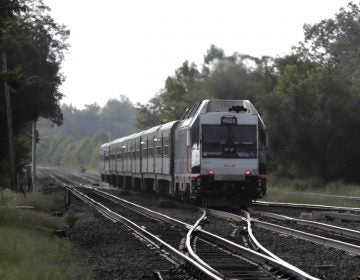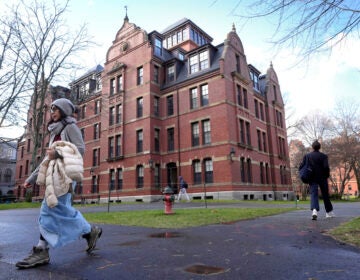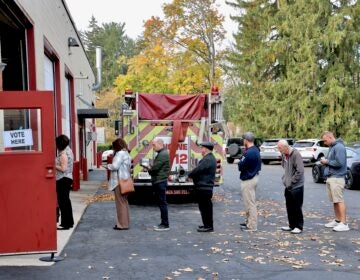New Jersey unlikely to catch up with national growth in 2015

New Jersey bankers expect the national and state economies to remain unchanged in the coming year. In the case of the country as whole, that may not be a bad thing, they say. On the local level? Not so much.
“There’s an overwhelming expectation that current conditions in the United States are pretty good and are going to continue into the future,” James Hughes, dean of the Edward J. Bloustein School of Planning and Public Policy, told the New Jersey Bankers Association (NJBA) at its annual conference last week. Yet “[t]he state’s economy may be undead but it’s far from achieving a good performance.”
Five-and-a-half years after the end of the recession, Hughes reported that, according to the results of an opinion poll he wrote and gave NJBA members, respondents believe the U.S. economy has settled into a new normal. But New Jersey has experienced less than “full economic liftoff.”
The state’s inability to create post-recession jobs is clear from this telling example: In June 2013, economists predicted that the state would create 62,800 net jobs by the end of that year. They arrived at the figure by doubling the number of jobs that had been created between January and June. Instead, the state shed so many jobs between July 1 and December 31 that the final net job creation figure for 2013 was 19,800 — a little more than half of what it had been on June 30.
Three things that hurt NJ
Fortunately, Hughes attributes much of the soft growth of the past 18 months to three one-time factors. First, Hurricane Sandy — both its destruction and the exaggerated perception of destruction — scared tourists away and pushed instate vacationers to out-of-state destinations the summer after the storm. Second, a brutal winter suppressed the economy. Finally, the closure of Atlantic City casinos later in 2014 kept the state’s expansion modest.
As it stands today, New Jersey’s unemployment rate is 6.4 percent (0.8% higher than the national average). It ranks 45th in the U.S. for economic growth. And its dense stock of suburban office space keeps it from attracting companies that want to locate in the transit-friendly cities preferred by millennial workers.
“There’s no way to sugarcoat it,” he said. “New Jersey is really lagging behind the nation in terms of job growth.”
However, Hughes expects some easing of tensions when the labor department releases final numbers for 2014 later this week. He guesses that 34,250 net jobs have been added in the state.
Hughes and his fellow speakers said New Jersey must listen to the desires of millennials if it hopes to compete in the 21st century economy. With workers eschewing the suburbs in favor of a “24/7 LWP” (meaning: “round-the-clock live-work-play”) environment, the state’s bankers, developers, and elected officials must beef up its technological and public transportation infrastructure and build offices that meet modern expectations. And if they must locate offices in the suburbs, they need to do it in a way that satisfies contemporary sensibilities.
“When we built our new headquarters, our employees told us they wanted a bubble soccer field and they didn’t want offices. They wanted a bullpen,” Donald Musso, president and CEO of Gladstone-based FinPro financial services consultancy, told the audience.
‘Good’ but not ‘excellent’ days ahead
Respondents to Hughes’ survey expect that in the coming six months, businesses in their markets will maintain current staffing levels, though double the number of respondents as last year expect their local businesses to hire.
Although the state’s older, larger retail properties are growing obsolete as brick-and-mortar stores shrink, New Jersey does outpace its competitors in square footage used by warehouse-sized fulfillment centers. As more shopping goes online and requires more distribution centers, New Jersey — especially the Meadowlands — benefits from its road network and proximity to New York.
Perhaps driven by this demand for warehouse space most respondents said the call for business loans and commercial real estate loans has improved since last year, though they expect it to remain the same over the next six months. Residential loan demand should also stay the same, if respondents’ opinions hold true. But this compares unfavorably with last year, when more people expected demand to rise. Home values will likely be flat for the next six months, as will requests for residential refinancing. And almost half of respondents now characterize the multifamily rental submarket as a bubble.
They also say that the improvement in the number of past dues for residential mortgage payments has reversed and is yet again becoming a problem. Interest rate risk emerges as the largest growing concern for consumer lending for this year, and lack of qualified borrowers supplanted lack of demand as the most significant obstacle to business lending.
Despite the growing number of “fair” and “good” ratings and the decreasing number of negative ratings seen in this year’s survey compared with years past, one aspect of the survey remains unchanged: no respondent in five years has rated any national or state economic indicator as “excellent.”
“Last year we were afraid the ‘excellent’ rating was becoming endangered,” said Hughes, who authored the study. “Now we think it’s extinct.”
__________________________________
NJ Spotlight, an independent online news service on issues critical to New Jersey, makes its in-depth reporting available to NewsWorks.
WHYY is your source for fact-based, in-depth journalism and information. As a nonprofit organization, we rely on financial support from readers like you. Please give today.




